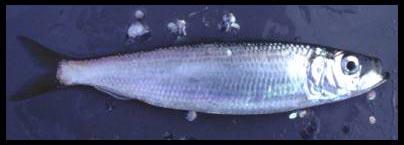Moderate-
High
Climate vulnerability
Sensitivity to climate change
Moderate
A main way in which Pacific herring will be sensitive to climate change is through change in their prey availability and the distribution of appropriate spawning habitat. Primary and secondary productivity are strongly linked to juvenile abundance, as juveniles tend to prey on zooplankton (e.g., copepods). Predicted increases in sea surface temperature and changes in upwelling, such as delayed and shorter upwelling seasons, could affect the timing and abundance of available prey for juveniles, though the magnitude of these effects is uncertain. In Washington, herring populations have already shown northward movement for spawning and smaller juvenile cohorts, and these patterns could increase with predicted increases in sea surface temperature. Increased temperatures could also lead to northward shifts and increased abundance of Pacific hake, which prey upon herring and could thus lead to population declines through increased predation. Herring will also be sensitive to potential changes in nearshore and estuarine spawning habitat, such as increased salinity due to sea level rise and saltwater intrusion in estuaries, which could create suboptimal conditions for spawning and larval growth. Additionally, the suite of vegetative species used by herring as spawning substrate could change with long-term variation in water temperature and acidity. The prevalence and composition of this algal mat could result in degradation of spawning habitat to a degree that ultimately reduces incubation success.
Exposure to climate change
Moderate-
High
- Increased ocean temperatures
- Altered upwelling patterns
- Changes in salinity
- Saltwater intrusion in estuarine habitat
